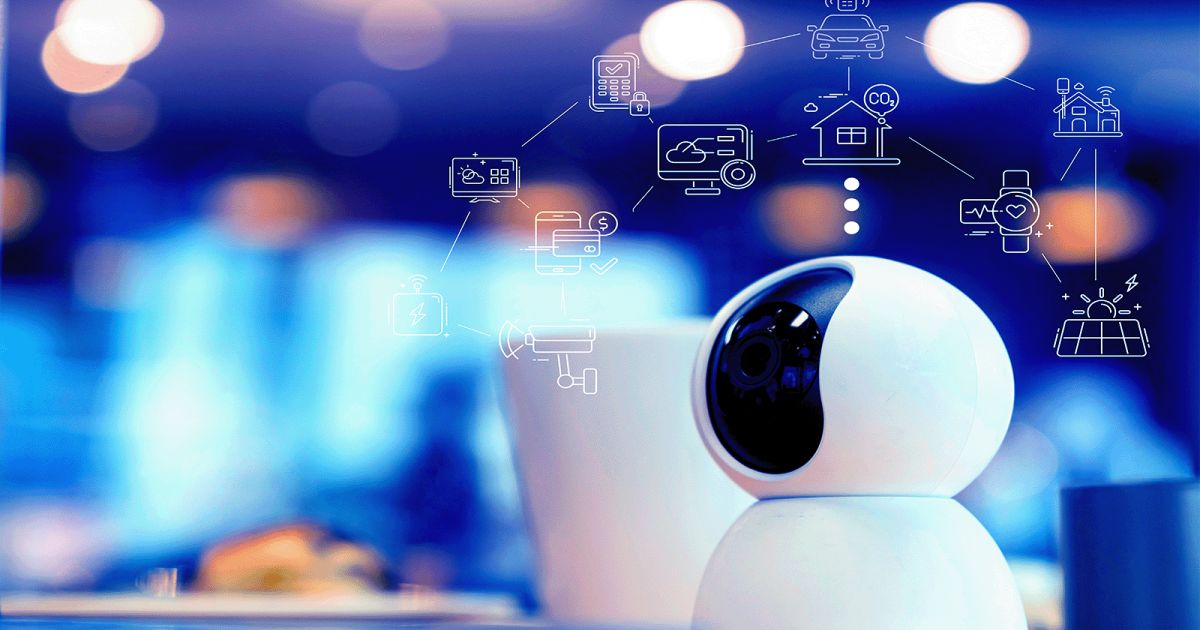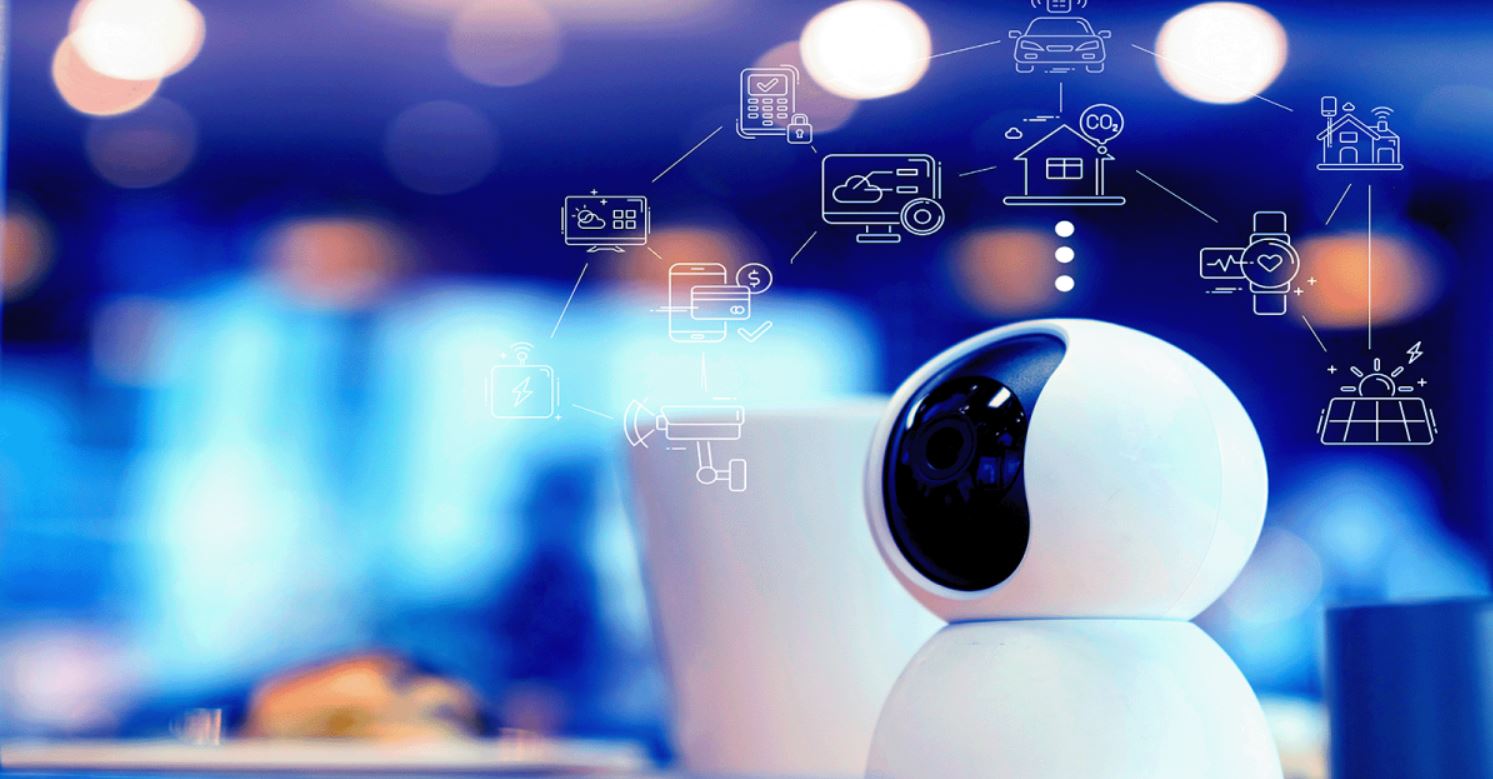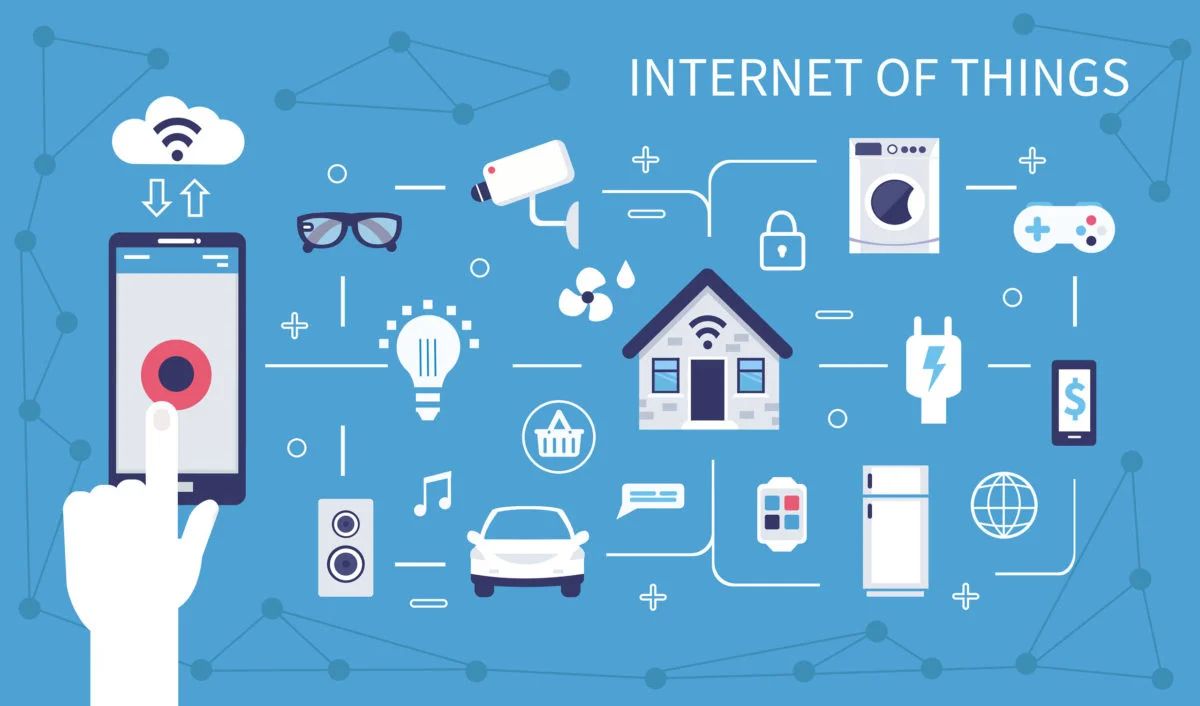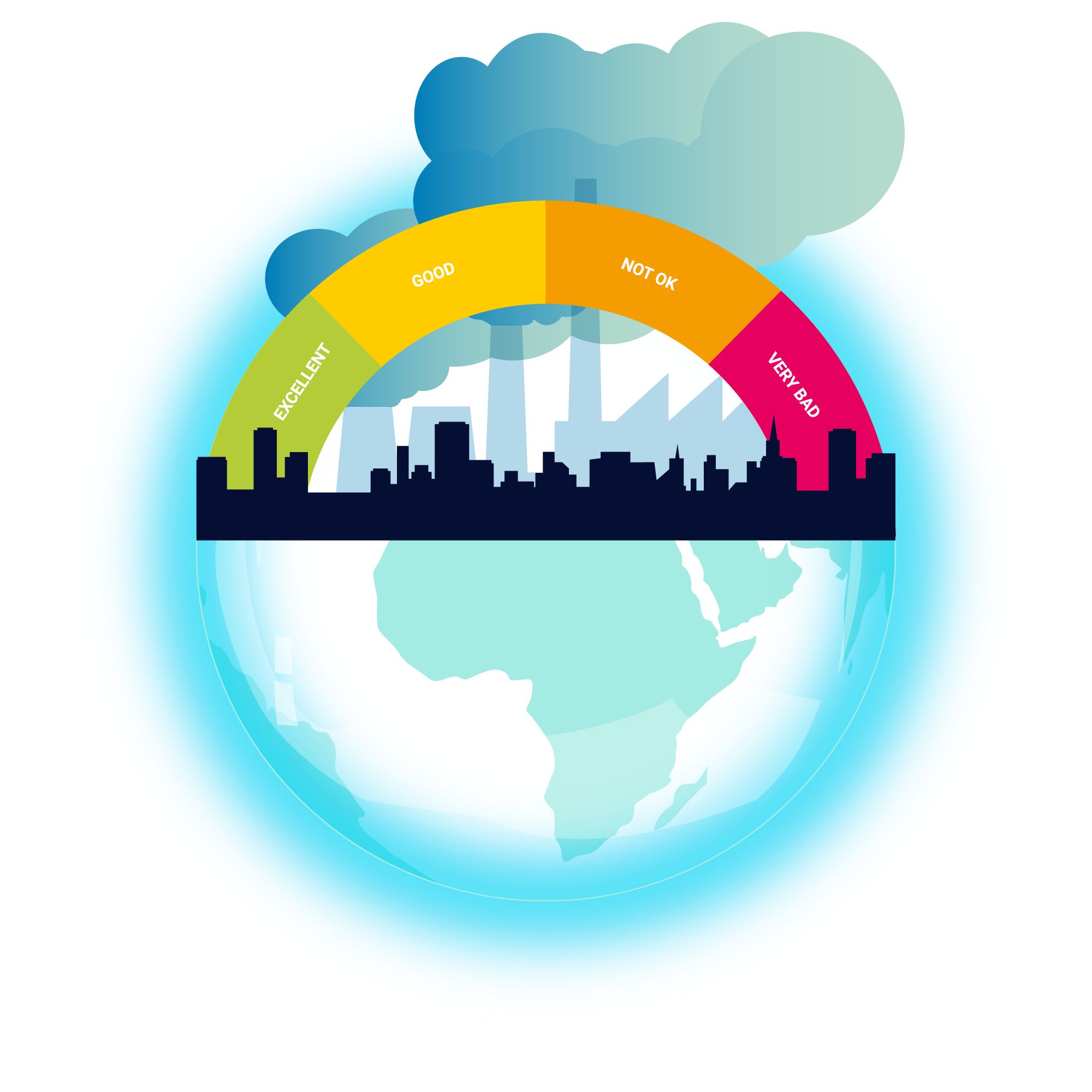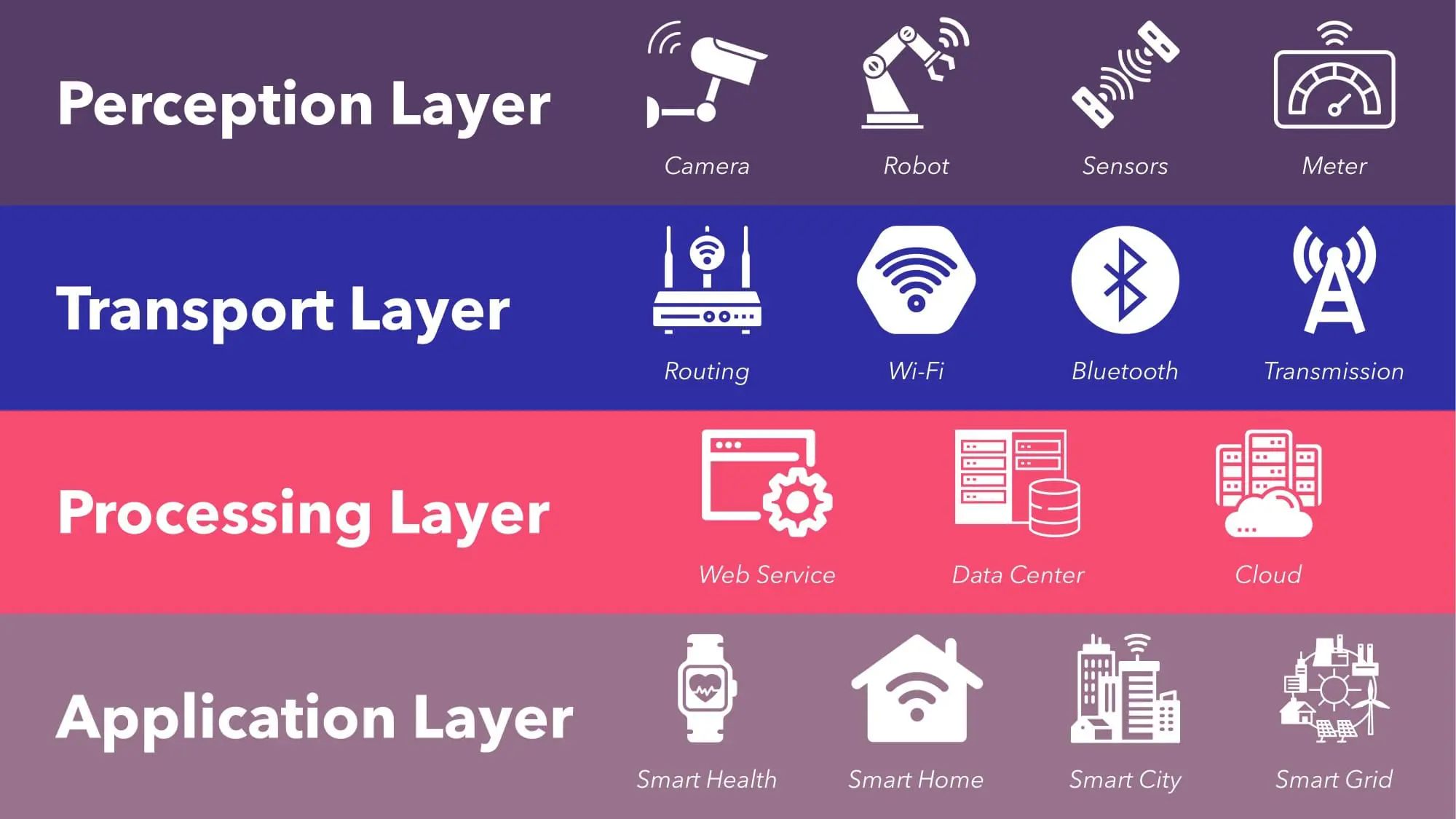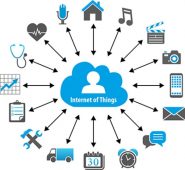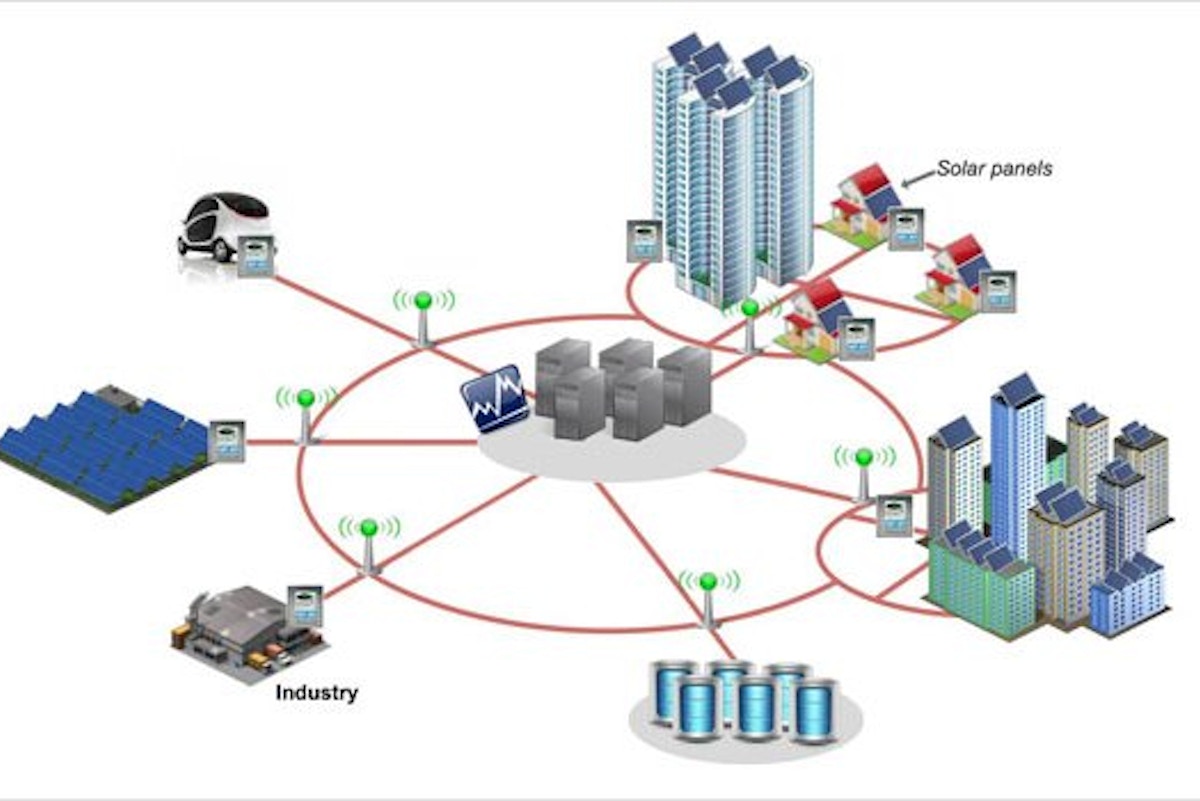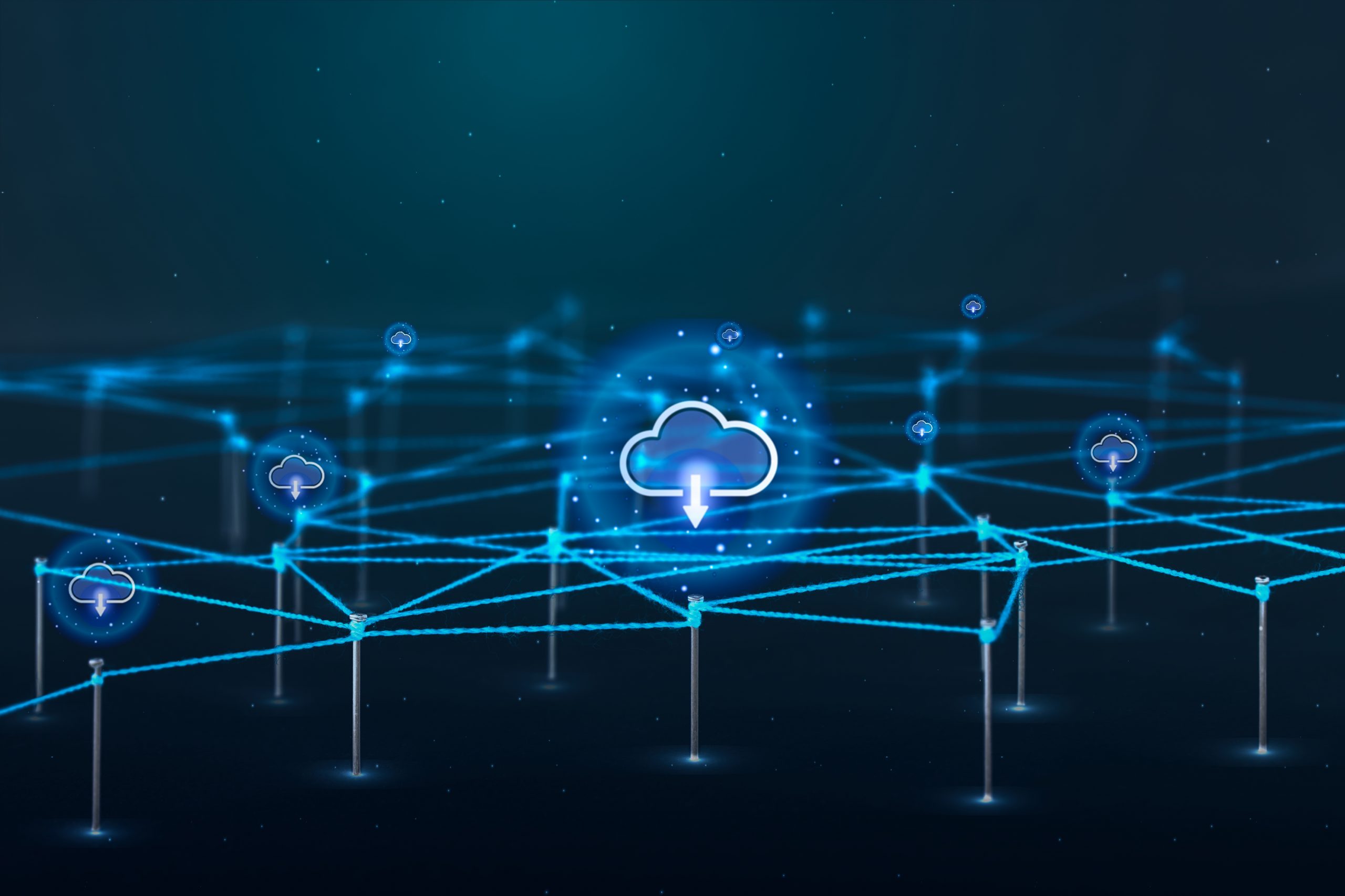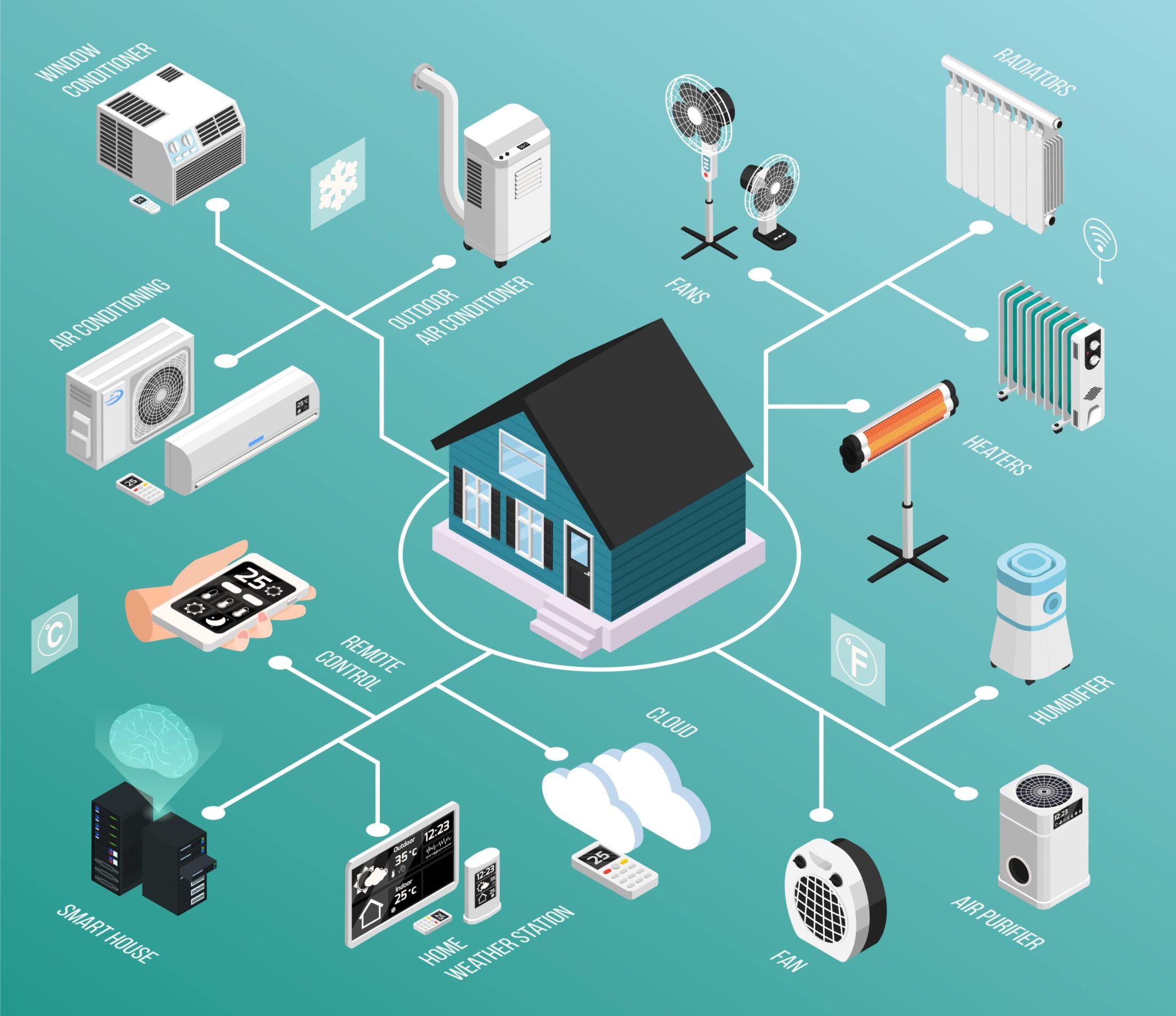Introduction
Welcome to the world of IoT sensors, where cutting-edge technology and the internet converge to revolutionize the way we interact with the physical world. IoT, short for the Internet of Things, refers to a vast network of interconnected devices and sensors that collect and transmit data to enable smart and automated processes.
The concept of IoT has gained immense popularity in recent years, transforming industries and everyday lives. From wearable devices and smart home appliances to industrial equipment and healthcare systems, IoT has paved the way for unprecedented connectivity and data-driven decision-making.
At the heart of the IoT ecosystem are IoT sensors, crucial components that capture and monitor data from the physical environment. These sensors act as the senses of the digital world, allowing devices and systems to gather information about various factors such as temperature, humidity, motion, light, and much more.
IoT sensors work in tandem with other IoT devices, such as actuators and gateways, to create a seamless flow of information, enabling real-time monitoring, analysis, and control. This connectivity has opened up a world of possibilities, transforming industries and sectors across the globe.
In this article, we will explore the world of IoT sensors, diving into their types, applications, benefits, and challenges. We will also take a look at the future of IoT sensors and how they will continue to shape our interconnected world.
What is IoT?
The Internet of Things, or IoT, refers to the network of interconnected physical devices that are embedded with sensors, software, and other technologies to exchange data and interact with each other through the internet. This vast web of connectivity enables objects to collect and transmit data without requiring human-to-human or human-to-computer interaction.
IoT extends the reach of the internet beyond traditional computing devices, such as smartphones and computers, to a wide range of everyday objects. These objects, often referred to as “smart” devices, can include anything from household appliances and thermostats to vehicles, wearables, machinery, and infrastructure.
The power of IoT lies in its ability to enable these smart devices to communicate with one another and interact with their environment in an intelligent and automated manner. By leveraging sensors, actuators, and other embedded technologies, IoT devices can collect data, analyze it, and make informed decisions or trigger actions accordingly.
With IoT, the world becomes interconnected in a way that was once unimaginable. Businesses and individuals can now make use of the vast amounts of data generated by IoT devices to create innovative services, improve efficiency, enhance safety, and transform various aspects of our lives.
IoT has already made a significant impact on various industries, including healthcare, manufacturing, agriculture, transportation, and home automation. It has the potential to revolutionize sectors such as smart cities, energy management, environmental monitoring, and much more.
Overall, IoT is a transformative technology that has the potential to reshape the way we live, work, and interact with the world around us. As the number of connected devices continues to grow rapidly, the possibilities for innovation and advancement are endless.
What are IoT Sensors?
IoT sensors are devices that are designed to detect and gather data from the physical environment and convert it into digital signals that can be transmitted and processed by other IoT devices or systems. These sensors act as the eyes and ears of the IoT network, providing valuable information about the surrounding world.
IoT sensors come in various shapes and sizes, and they are equipped with different types of sensors depending on the specific data they need to collect. Some common types of IoT sensors include temperature sensors, humidity sensors, motion sensors, light sensors, pressure sensors, and proximity sensors, to name a few.
These sensors are typically embedded within IoT devices or objects, allowing them to monitor and measure various physical parameters. For example, a temperature sensor can detect the temperature of a room, while a motion sensor can detect movement or presence in a given area.
IoT sensors are usually equipped with a microprocessor and wireless communication capabilities, enabling them to transmit data to other devices or systems in real-time. This data can then be processed, analyzed, and used to trigger actions or make informed decisions.
The data collected by IoT sensors plays a vital role in enabling the automation, optimization, and intelligence of IoT systems. For instance, in a smart home setting, temperature sensors can help regulate the temperature automatically based on preset conditions, while motion sensors can trigger lights or security alarms when motion is detected.
Furthermore, IoT sensors are not limited to a specific location or industry. They can be found in various contexts, from industrial settings and agriculture to healthcare and transportation. Their versatility allows for a wide range of applications and possibilities.
In summary, IoT sensors are essential components of the IoT ecosystem. They enable the collection of data from the physical environment to drive intelligent decision-making, automation, and enhanced connectivity, ultimately transforming the way we interact with technology and the world around us.
How do IoT Sensors work?
IoT sensors work by capturing data from the physical environment and converting it into digital signals that can be transmitted and processed by other IoT devices or systems. The process involves several key components and steps that enable the seamless collection and transmission of data.
1. Sensing: IoT sensors are equipped with various types of sensors depending on the data they need to collect. These sensors can detect parameters such as temperature, humidity, motion, light, pressure, and more. When a change in the environment occurs, the sensors capture the corresponding data.
2. Processing: Once the sensor captures the data, it is processed by an internal microprocessor embedded within the sensor. The microprocessor is responsible for converting the analog signal from the sensor into a digital signal that can be understood by other devices or systems.
3. Connectivity: IoT sensors are designed to be connected to other IoT devices or systems. They are equipped with wireless communication capabilities such as Wi-Fi, Bluetooth, or cellular connectivity. This enables them to transmit the collected data to other devices or systems in real-time.
4. Data Transmission: The collected data is transmitted from the IoT sensor to other devices or systems using the established connectivity. This can be a local network or a cloud-based platform. The data can be sent directly to a central server or to a gateway device that aggregates and forwards the data to its intended destination.
5. Data Processing and Analysis: Once the data reaches its destination, it can be processed and analyzed to extract valuable insights. This can involve complex algorithms and machine learning techniques to derive meaningful information from the collected data.
6. Decision-making and Action: Based on the analyzed data, IoT systems can make informed decisions or trigger actions. For example, in a smart home setting, data from IoT sensors can be used to automatically adjust the temperature, turn on lights, or activate security systems.
7. Feedback and Control: IoT sensors can also receive commands or instructions from other devices or systems. This enables remote control and monitoring of the sensor itself or the connected devices. It allows for real-time adjustments and interventions, enhancing operational efficiency and flexibility.
By following these steps, IoT sensors enable the seamless flow of data between the physical world and the digital realm. They play a crucial role in creating an interconnected network of devices, enabling smart and automated systems that enhance our everyday lives.
Types of IoT Sensors
IoT sensors come in a wide variety of types, each designed to capture specific data from the environment. These sensors are essential in providing valuable insights and facilitating automation in various industries and applications. Here are some common types of IoT sensors:
1. Temperature Sensors: Temperature sensors detect and measure changes in temperature. They are commonly used in industries such as HVAC (Heating, Ventilation, and Air Conditioning) systems, food storage, and healthcare devices.
2. Humidity Sensors: Humidity sensors measure the level of moisture in the air. These sensors find applications in industries like agriculture (to monitor crop growth conditions), storage facilities (to prevent mold or moisture damage), and HVAC systems (to maintain optimal humidity levels).
3. Motion Sensors: Motion sensors detect movement or changes in position. They are often used in security systems, home automation, and occupancy monitoring applications. Motion sensors can trigger alarms, turn on lights, or initiate other actions based on detected movement.
4. Light Sensors: Light sensors, also known as photoelectric sensors, measure the amount of light in the surroundings. They are used in applications such as automatic lighting control, brightness adjustment in displays, and energy-efficient street lighting.
5. Proximity Sensors: Proximity sensors detect the presence or absence of objects in close proximity. These sensors are widely used in automation and robotics, touchless interfaces, and security systems. They can trigger actions or control devices based on the proximity of objects.
6. Pressure Sensors: Pressure sensors measure changes in pressure or force. They are utilized in various industries, including automotive (tire pressure monitoring), healthcare (blood pressure monitoring), and industrial automation (monitoring fluid pressure in machines).
7. Gas Sensors: Gas sensors detect the presence and concentration of specific gases in the environment. They are essential in industries such as environmental monitoring, air quality control, and industrial safety. Gas sensors can detect gases like carbon monoxide, carbon dioxide, methane, and more.
8. Accelerometers: Accelerometers measure acceleration and tilt or orientation changes. They are commonly used in applications like smartphones (to facilitate screen rotation), gaming devices, vehicle stability control, and remote monitoring of structural integrity in buildings and bridges.
These are just a few examples of the many types of IoT sensors available. Each sensor type operates on specific principles and technologies to capture and transmit data. The choice of sensor depends on the application requirements and the physical parameters to be monitored.
Overall, the diverse range of IoT sensor types enables the collection of accurate and real-time data, empowering businesses and individuals with actionable insights and improved decision-making capabilities.
Applications of IoT Sensors
The applications of IoT sensors are vast and span across various industries and sectors. These sensors play a vital role in enabling data-driven decision-making, automation, and optimization. Here are some key applications of IoT sensors:
1. Smart Home Automation: IoT sensors are central to creating smart homes, where devices can communicate and automate tasks. Sensors monitor factors like temperature, humidity, and light to adjust settings, optimize energy usage, and enhance convenience and comfort for residents.
2. Industrial Automation: IoT sensors are widely used in industrial settings to monitor and control machinery, equipment, and processes. Sensors help collect data on variables like temperature, pressure, and vibration, enabling real-time monitoring, predictive maintenance, and optimizing production efficiency.
3. Environmental Monitoring: IoT sensors are employed in various environmental monitoring applications. They can measure air quality, noise levels, water quality, and detect the presence of pollutants. This data is crucial for managing and preserving ecosystems, ensuring public health, and addressing climate change concerns.
4. Healthcare and Remote Patient Monitoring: IoT sensors in healthcare enable remote patient monitoring, wearable devices, and real-time health tracking. Sensors can monitor vital signs, medication adherence, and provide early warning signs. This enables personalized healthcare and improves the quality of patient care.
5. Agriculture and Precision Farming: IoT sensors are used in precision agriculture to optimize crop growth, monitor soil moisture levels, and manage irrigation systems efficiently. Sensors also help collect data on weather conditions, pest presence, and crop health, aiding farmers in making informed decisions.
6. Transportation and Logistics: IoT sensors are utilized in the transportation and logistics industry to track goods, monitor vehicle conditions, and optimize routes and inventory management. Sensors can collect data on location, temperature, and movement, ensuring better supply chain visibility and efficient operations.
7. Smart Cities and Infrastructure: IoT sensors contribute to the development of smart cities by monitoring and managing various aspects of urban life. Sensors help monitor traffic flow, optimize energy consumption, manage waste, and enhance public safety and security through real-time data collection and analysis.
8. Energy Management: IoT sensors help monitor energy consumption and identify patterns for efficient usage. Sensors can detect occupancy in rooms, adjust lighting and temperature accordingly, and optimize energy usage in residential, commercial, and industrial settings, leading to cost savings and sustainability.
These are just a few examples of how IoT sensors are transforming industries and sectors. The ability to collect and analyze real-time data from the physical environment enables improved decision-making, operational efficiency, cost savings, and enhanced quality of life.
Benefits of IoT Sensors
IoT sensors offer a wide range of benefits across various industries and applications. These sensors enable businesses and individuals to collect, analyze, and utilize real-time data from the physical environment, leading to improved efficiency, enhanced decision-making, and transformative outcomes. Here are some key benefits of IoT sensors:
1. Real-time Data Collection: IoT sensors provide real-time data on various parameters such as temperature, humidity, motion, and more. This enables businesses to monitor conditions, identify issues, and make timely decisions based on accurate and up-to-date information.
2. Automation and Efficiency: IoT sensors facilitate automation by allowing devices to communicate with one another and trigger actions based on collected data. This automation improves operational efficiency, reduces manual intervention, and minimizes human errors.
3. Predictive Maintenance: IoT sensors can monitor the health of equipment and machinery by collecting data on factors like temperature, vibration, and performance. This data allows businesses to detect potential issues and perform timely maintenance before costly breakdowns occur.
4. Enhanced Safety and Security: IoT sensors play a crucial role in improving safety and security across various contexts. For instance, sensors can detect motion, smoke, or gas leaks, triggering alarms or notifying authorities. They can also monitor environmental conditions in hazardous areas to ensure the safety of workers.
5. Cost Savings: IoT sensors enable optimization and efficient resource utilization, leading to cost savings. For example, sensors can regulate energy usage in buildings based on occupancy, reducing energy waste and lowering utility bills. Similarly, optimized inventory management and transportation routes can result in savings in the logistics industry.
6. Improved Decision-making: IoT sensors provide businesses with valuable insights and data-driven analytics, enabling informed decision-making. With real-time and accurate information, businesses can optimize processes, identify trends, and make strategic decisions to drive growth and competitive advantage.
7. Personalization and Convenience: IoT sensors enable personalized experiences and convenience in various applications. For instance, smart homes can automatically adjust lighting, temperature, and entertainment preferences based on individual preferences and presence, enhancing comfort and convenience.
8. Environmental Sustainability: IoT sensors contribute to sustainability efforts by enabling efficient resource utilization. Sensors can monitor and control energy consumption, water usage, and waste management, promoting environmentally-friendly practices and reducing carbon footprint.
9. Improved Quality of Life: IoT sensors in healthcare, smart cities, and other areas help improve the quality of life for individuals. Remote patient monitoring improves healthcare access and patient outcomes, while smart city initiatives enhance infrastructure, transportation, and public services for a better urban living experience.
These benefits highlight the transformative potential of IoT sensors. From efficient operations and cost savings to improved safety and sustainability, IoT sensors are a critical component of the digital revolution.
Challenges of IoT Sensors
While IoT sensors offer numerous benefits, there are also several challenges that need to be addressed for their successful implementation and usage. These challenges span technical, security, and infrastructure aspects. Here are some key challenges of IoT sensors:
1. Connectivity: IoT sensors rely on stable and reliable connectivity to transmit data. However, connectivity issues such as weak signal strength, network congestion, and limited coverage can hinder the effective functioning of sensors. Ensuring robust connectivity infrastructure is crucial for seamless data transmission.
2. Power Consumption: IoT sensors are often battery-powered and need to operate for extended periods without frequent battery changes. This poses a challenge as sensors need to balance power consumption with data collection and transmission requirements. Improved energy efficiency and battery life solutions are essential for maximizing sensor uptime.
3. Data Privacy and Security: IoT sensors generate vast amounts of data, which can contain sensitive and personal information. Ensuring data privacy and protecting against security breaches is a significant challenge. Implementing robust encryption, authentication, and access control measures is crucial to safeguard data from unauthorized access or tampering.
4. Scalability: IoT sensor networks can grow rapidly, consisting of thousands or even millions of connected devices. Managing and scaling such networks pose challenges in terms of network management, data processing, and infrastructure scalability. Strategies for efficient network management and scalability need to be in place to handle the demands of large-scale IoT deployments.
5. Interoperability: With a wide range of IoT device manufacturers and communication protocols, ensuring interoperability between sensors and IoT platforms can be a challenge. Lack of standardized protocols and compatibility issues can hinder seamless integration and data exchange between different IoT devices and systems.
6. Data Overload and Analytics: IoT sensors generate massive amounts of data continuously. Managing and analyzing this data can be overwhelming. Effective data analytics and processing techniques are necessary to derive meaningful insights from the collected data and make informed decisions.
7. Maintenance and Reliability: IoT sensors, like any other electronic devices, require regular maintenance and upkeep. Ensuring the reliability and durability of sensors in various environments and conditions can be a challenge. Remote monitoring and predictive maintenance practices can help address these challenges to minimize downtime and maximize sensor lifespan.
8. Cost and ROI: Implementing IoT sensor solutions can involve significant upfront costs, including the purchase, installation, and maintenance of sensors and supporting infrastructure. Ensuring a favorable return on investment (ROI) and long-term cost-effectiveness can be a challenge, especially for small-scale deployments or niche applications.
Addressing these challenges requires collaboration between stakeholders, innovative solutions, and a comprehensive understanding of the complexities associated with IoT sensor deployments. Overcoming these challenges can unlock the full potential of IoT sensors and drive widespread adoption across industries.
Future of IoT Sensors
The future of IoT sensors looks promising as technology continues to advance and new opportunities emerge. With the ongoing development of connectivity, data analytics, and artificial intelligence, IoT sensors are poised to play an even more significant role in shaping our interconnected world. Here are some key trends and possibilities for the future of IoT sensors:
1. Edge Computing: Edge computing is gaining momentum as a solution to process data closer to the source, reducing latency and enhancing real-time decision-making. IoT sensors will increasingly incorporate edge computing capabilities, enabling faster data analysis, reduced bandwidth usage, and enhanced overall system performance.
2. Enhanced AI and Machine Learning Integration: AI and machine learning algorithms will become more embedded in IoT sensors, allowing them to analyze and learn from data in real-time. This will enable sensors to become more intelligent, adaptive, and predictive, leading to more sophisticated automation, personalized experiences, and improved operational efficiencies.
3. Miniaturization and Increased Sensing Capabilities: IoT sensors will continue to shrink in size while becoming more powerful and versatile. Advancements in nanotechnology and microelectronics will allow for the development of smaller, yet more powerful sensors with increased sensing capabilities, enabling new applications in areas such as wearable devices and healthcare monitoring.
4. Energy Harvesting: Energy harvesting techniques, such as using solar power or kinetic energy, will become more prevalent in IoT sensors. This will reduce reliance on batteries and extend the operational lifespan of sensors. Energy-efficient sensors combined with energy harvesting technologies will contribute to sustainability and reduce maintenance efforts.
5. Integration with 5G Networks: The widespread adoption of 5G networks will provide high-speed and low-latency connectivity, enabling seamless communication between sensors and IoT devices. This will unlock new possibilities for real-time applications, autonomous systems, and remote monitoring, enhancing the overall IoT ecosystem.
6. Blockchain Integration: Blockchain technology can enhance security and privacy in IoT sensor networks by providing tamper-proof and transparent data management. Blockchain integration can facilitate secure data sharing between sensors, ensure data integrity, and enable auditable records, especially in industries such as supply chain management and healthcare.
7. Collaboration and Interoperability: The future of IoT sensors will depend heavily on collaboration between different stakeholders, including sensor manufacturers, platform providers, and industry standards organizations. Efforts to establish interoperability standards and frameworks will be essential to enable seamless integration of sensors across different systems and industries.
These are just a few glimpses of the future of IoT sensors. As technology continues to evolve and new innovations arise, IoT sensors will play an even more integral role in our daily lives, transforming industries, enhancing efficiency, and improving the overall human experience.
Conclusion
In conclusion, IoT sensors are revolutionizing the way we interact with the physical world, enabling an interconnected ecosystem of devices and systems. These sensors act as the senses of the digital realm, capturing valuable data from the environment and converting it into digital signals for analysis and decision-making.
The applications of IoT sensors span across various industries, from smart homes and industrial automation to healthcare, agriculture, and environmental monitoring. They offer numerous benefits, including real-time data collection, automation, predictive maintenance, enhanced safety, and cost savings.
However, there are also challenges that need to be addressed, such as connectivity issues, data privacy and security concerns, scalability, and interoperability. Overcoming these challenges requires collaboration, innovative solutions, and a comprehensive understanding of the complexities associated with IoT sensor deployments.
The future of IoT sensors looks promising, with advancements in edge computing, AI integration, miniaturization, energy harvesting, and 5G networks. These advancements will enable more intelligent and versatile sensors with increased capabilities, driving innovation and transformative outcomes.
As technology continues to evolve, IoT sensors will play an increasingly important role in shaping our interconnected world. They will continue to drive improvements in efficiency, sustainability, and quality of life, transforming industries and enhancing our everyday experiences.
Overall, IoT sensors are at the core of the digital revolution, empowering businesses and individuals with valuable insights, automation, and intelligent decision-making. Embracing and harnessing the power of IoT sensors will unlock new possibilities and pave the way for a more connected and data-driven future.







